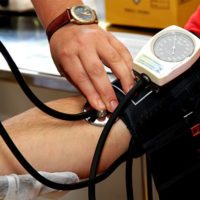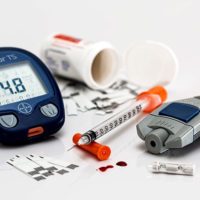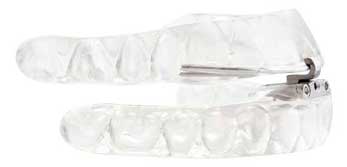Sleep Apnea
Do you have trouble sleeping? If so, you’re not alone. An estimated 22 million Americans suffer from a lack of sleep—and even exhaustion—caused by sleep apnea. Chronic snoring problems and interrupted sleep aren’t just an inconvenience. Untreated sleep apnea can lead to more serious health risks. Sleep apnea is a common but serious sleep disorder that causes interruptions in breathing during sleep. These pauses in breathing are called apneas and they can happen hundreds of times each night. Sleep apnea can have a negative impact on your health and prevent you from getting the restful night’s sleep your body needs.

Potential Health Issues
From Untreated Sleep Apnea
Continuously interrupted sleep can result in serious health-related problems.
Potential health issues that may result from untreated sleep apnea include:

Sudden death
Heart attack
Stroke
High blood pressure

Diabetes
Obesity
ADHD

Dementia
Depression
Inability to concentrate
Impaired memory

Common Symptoms
of Sleep Apnea
- Frequent, loud snoring
- Excessive daytime sleepiness
- Chronic exhaustion even after a full night’s sleep
- Gasping, choking or snorting during sleep
- Morning headaches
- Gastro Esophageal Reflux Disease (GERD)
- Insomnia
- High blood pressure
- Poor memory, moodiness or difficulty concentrating
- Waking up with a dry mouth or sore throat

Sleep Apnea Risk Quiz
Important Considerations for Sleep Apnea
Check all that apply. Use this brief questionnaire and checklist to determine if you might be at risk for sleep apnea.

Sleep Apnea Consultation
Our doctors feel so strongly that knowledge and action can improve and save lives that they are offering an individual 30 minute Zoom consultation on sleep breathing disorders. Whether it’s loud snoring or other sleep apnea symptoms, make sure you are not at risk for this very treatable, potentially life threatening condition. Learn more about sleep apnea and get all of your questions answered. We have a limited number of consultation times available, so schedule yours as soon as possible.

Oral Appliance Therapy
A Convenient Alternative to CPAP
These devices are custom fitted by dentists with special expertise and training in treating sleep apnea. They fit in the mouth, similar to a retainer or mouth guard. They open your airway by moving your lower jaw and tongue forward while you sleep. They are small, comfortable and effective.

Benefits of Treatment
Restful Sleep
A full night’s sleep for both you and your partner. Wake up feeling refreshed and rejuvenated.

Daytime Alertness
Experience increased concentration, memory, focus and energy.
Improved Health
Avoid the health risks caused by untreated sleep apnea and live a longer, healthier, more enjoyable life.
Meet the Doctor
George Ghaly, DDS
Dr Ghaly graduated with his Doctor of Dental Surgery degree in 1999 from the University of Buffalo. He specializes in all aspects of dental care, as well as screening and treating patients with obstructive sleep apnea and other forms of breathing-related sleep disorders.
Dr Ghaly’s journey with the treatment of sleep apnea started when he himself was first diagnosed with the disorder. Instead of using the traditional CPAP treatment, he decided to fabricate an oral sleep apnea device. He slept well that night, however, his wife stayed up because she wasn’t hearing his snoring!! Dr George Ghaly has been treating his patients with an oral sleep apnea device for over 9 years and helping them sleep better and live well.
Dr Ghaly is a Diplomate of the American Academy of Dental Sleep Medicine.


